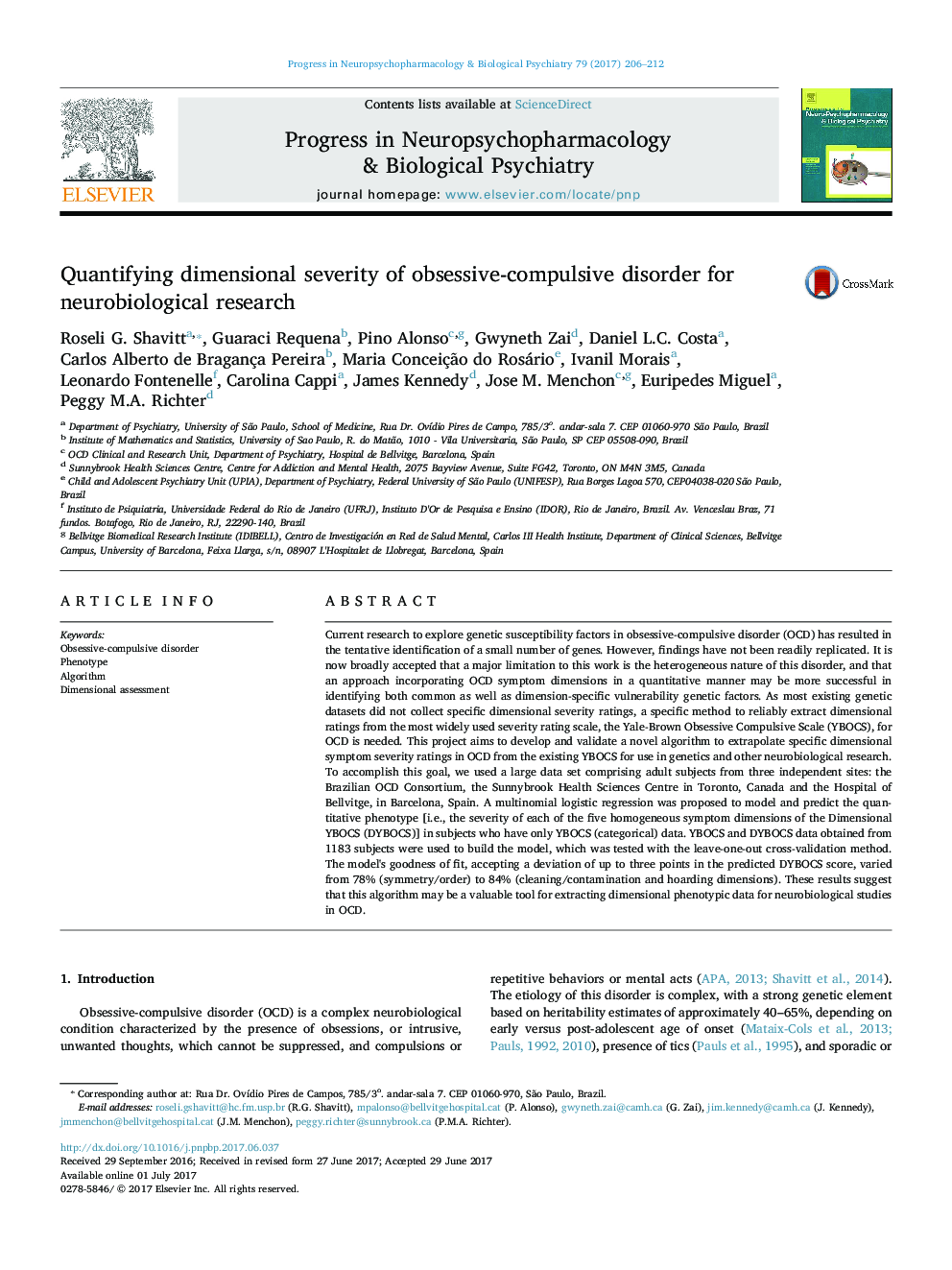| Article ID | Journal | Published Year | Pages | File Type |
|---|---|---|---|---|
| 5557920 | Progress in Neuro-Psychopharmacology and Biological Psychiatry | 2017 | 7 Pages |
â¢Neurobiological research in OCD uses mainly phenotypical categorical data.â¢A method to extract dimensional ratings from OCD categorical data is proposed.â¢Multinomial logistic regressions plus leave-one-out cross validation were performed.â¢The model's goodness of fit varied from 78%-symmetry to 84%-contamination, hoardingâ¢This algorithm seems valid for extracting OCD dimensional data.
Current research to explore genetic susceptibility factors in obsessive-compulsive disorder (OCD) has resulted in the tentative identification of a small number of genes. However, findings have not been readily replicated. It is now broadly accepted that a major limitation to this work is the heterogeneous nature of this disorder, and that an approach incorporating OCD symptom dimensions in a quantitative manner may be more successful in identifying both common as well as dimension-specific vulnerability genetic factors. As most existing genetic datasets did not collect specific dimensional severity ratings, a specific method to reliably extract dimensional ratings from the most widely used severity rating scale, the Yale-Brown Obsessive Compulsive Scale (YBOCS), for OCD is needed. This project aims to develop and validate a novel algorithm to extrapolate specific dimensional symptom severity ratings in OCD from the existing YBOCS for use in genetics and other neurobiological research. To accomplish this goal, we used a large data set comprising adult subjects from three independent sites: the Brazilian OCD Consortium, the Sunnybrook Health Sciences Centre in Toronto, Canada and the Hospital of Bellvitge, in Barcelona, Spain. A multinomial logistic regression was proposed to model and predict the quantitative phenotype [i.e., the severity of each of the five homogeneous symptom dimensions of the Dimensional YBOCS (DYBOCS)] in subjects who have only YBOCS (categorical) data. YBOCS and DYBOCS data obtained from 1183 subjects were used to build the model, which was tested with the leave-one-out cross-validation method. The model's goodness of fit, accepting a deviation of up to three points in the predicted DYBOCS score, varied from 78% (symmetry/order) to 84% (cleaning/contamination and hoarding dimensions). These results suggest that this algorithm may be a valuable tool for extracting dimensional phenotypic data for neurobiological studies in OCD.
